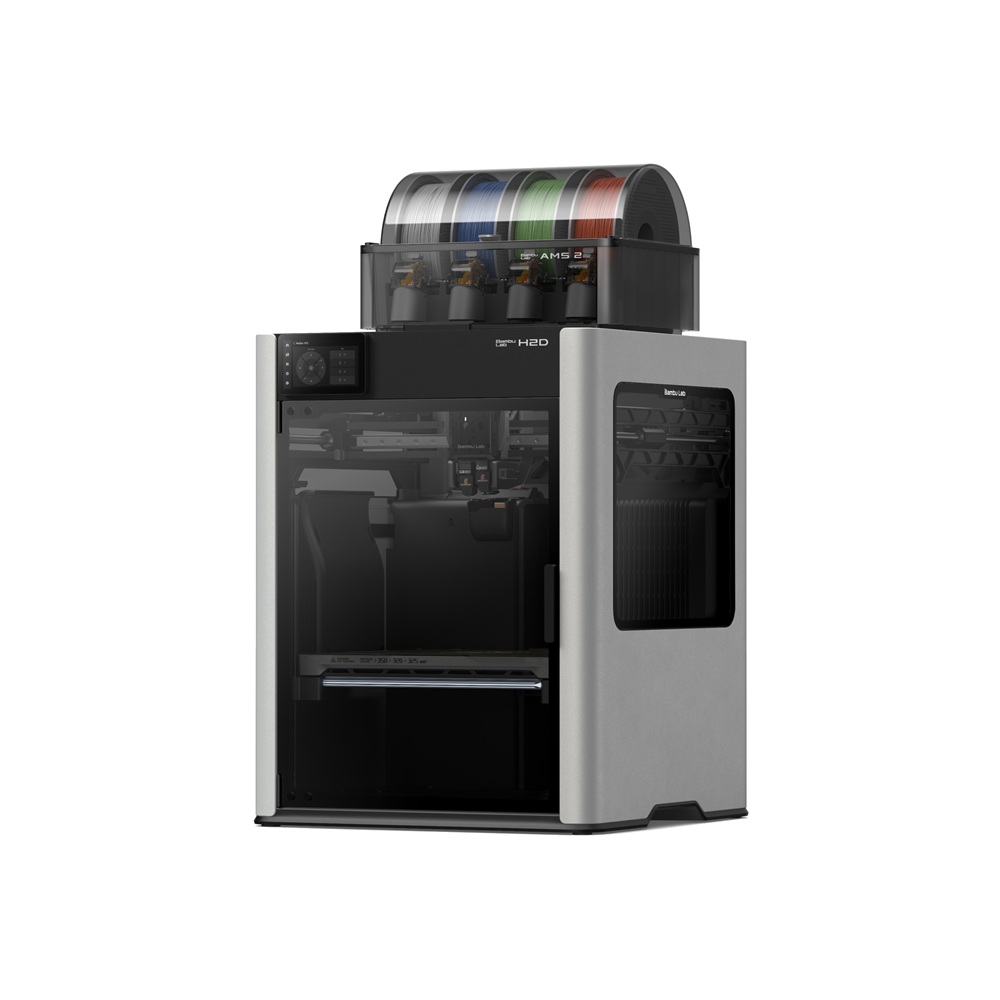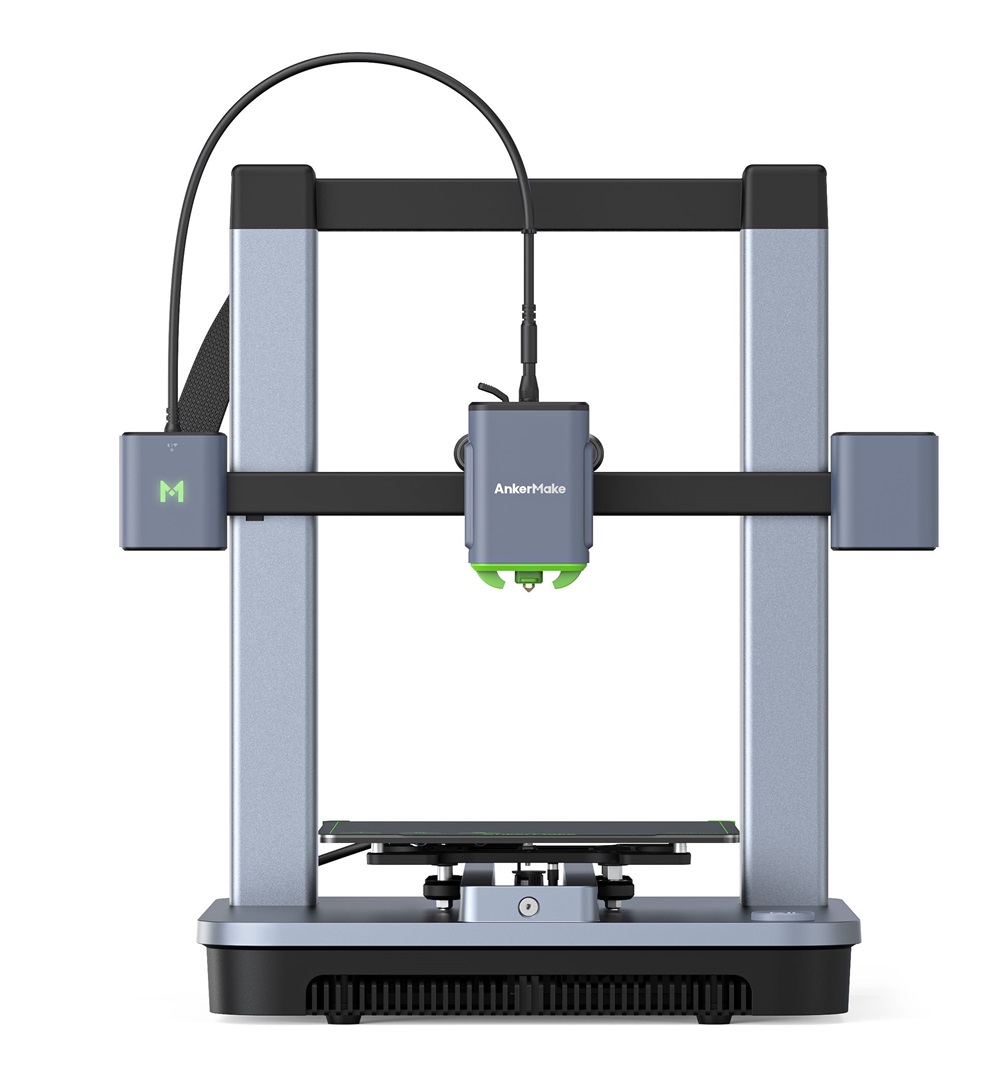Compare H2D vs M5C
Comparison between the best 3D printers
Choose the best 3D printer at the best price. The cheapest 3D printers are here.
Buy a 3D printer here with 3D Fila.
 |
 |
|
| Model | H2D |
M5C[BUY M5C] |
| Printing Material | Filament | Filament |
| Buy Filament for Bambu Lab H2D | Buy Filament forAnkerMake M5C | |
| Estimated price | $1899,00 | $399,00 |
| Manufacturer | Bambu Lab | AnkerMake |
| Release Year | 2025 | 2023 |
| Print Volume [mm] | 350x320x325 | 220x220x250 |
| Printer Size [mm] | 492x514x626 | 466x374x480 |
| Weight [kg] | 42,3 | 9,6 |
| Power Loss Recovery | YES | YES |
| Enclosed printer | YES | NO |
| Bed Leveling | Automatic | Automatic |
| Filament End Sensor | YES | YES |
| Bed type | Heated | Heated |
| Power supply system | Direct Drive | Direct Drive |
| Standard nozzle | 0,4 | 0,4 |
| Maximum Nozzle Temperature [°C] | 350 | 300 |
| Maximum Bed Temperature [°C] | 120 | 100 |
| Maximum printing speed [mm/s] | 600 | 500 |
| Filament holder | YES | YES |
| Camera for supervision | YES | YES |
| Recommended filaments | PLA, PETG, ABS, ASA, TPU, PVA, Nylon (PA) | PLA, PETG, TPU, ABS, PA, PLA-CF, PETG-CF, PA-CF |
| Recommended slicers | Bambu Studio | AnkerMake Studio (macOS, Windows), Simplify3D, Ultimaker Cura, PrusaSlicer |
| Maximum Resolution [mm] | 0,01 | 0,1 |
| Processor | ||
| Display | Touchscreen 5'' | |
| Power Supply | 350 W | |
| Connectivity | Wifi, Bambu bus, Cartão SD | Wi-Fi, USB-C, Bluetooth |
| Operating systems | Windows, Mac, Linux | Windows, Linux e Macbook |
| Date of registration in the system | 2025-03-31 | 2024-09-11 |
| Release date | 2025 | 2023 |
| Extra features | Bambu Labs H2D combines high-speed 3D printing with a chamber heated up to 65 °C, dual extrusion with automatic nozzle switching, an AMS for filament drying and exchange, and AI sensors that detect failures. It offers optional laser and digital cutting capabilities, features intelligent calibration through computer vision, vibration control, enhanced fire safety, and real-time camera monitoring. | The AnkerMake M5 printer stands out for its impressive print speed, reaching up to 500mm/s. It features AI print monitoring, an integrated camera for creating timelapses, auto-leveling bed with pressure sensor, direct extruder, flexible PEI-coated build plate, and Wi-Fi and USB-C connectivity. Assembly is quick and easy, and the printer is designed to deliver high print quality and ease of use. |
| Support for multiple colors and materials (AMS and CFS) | YES | NO |
Notes * |
||
| Cost-benefit | 7 / 10 | 7 / 10 |
| Hardware | 8 / 10 | 3.2 / 10 |
| Tela | . | . |
| Print volume | 4 / 10 | 3 / 10 |
| Performance | 5 / 10 | 4 / 10 |
| [BUY M5C] |
Conclusion |
| In conclusion, when comparing the Bambu Lab H2D and the AnkerMake M5C 3D printers, several distinct differences emerge that can influence a buyer's decision based on their specific needs and budget. The Bambu Lab H2D, while significantly pricier, offers a larger print volume, advanced features like dual extrusion with automatic nozzle switching, and the capability for multi-material printing. It excels in print speed and temperature tolerances, making it suitable for users looking for high-performance output and versatility. Additionally, its enclosed design and intelligent monitoring capabilities add to its appeal for serious hobbyists or professional users, justifying its higher cost through enhanced functionality and reliability. Conversely, the AnkerMake M5C stands out as a more accessible option, perfect for entry-level users or those with moderate printing needs. Its affordability does not compromise on quality, featuring impressive print speeds and essential functions like automatic leveling and AI monitoring. The M5C’s compact design and ease of assembly make it user-friendly, particularly for those just starting in 3D printing. Ultimately, the choice between these two models falls on the user's priorities—whether they value advanced features and larger capacity in the H2D or prefer a cost-effective, high-quality printing experience with the M5C. Each printer serves its respective market well, allowing users to select based on their specific requirements and budget constraints. |

